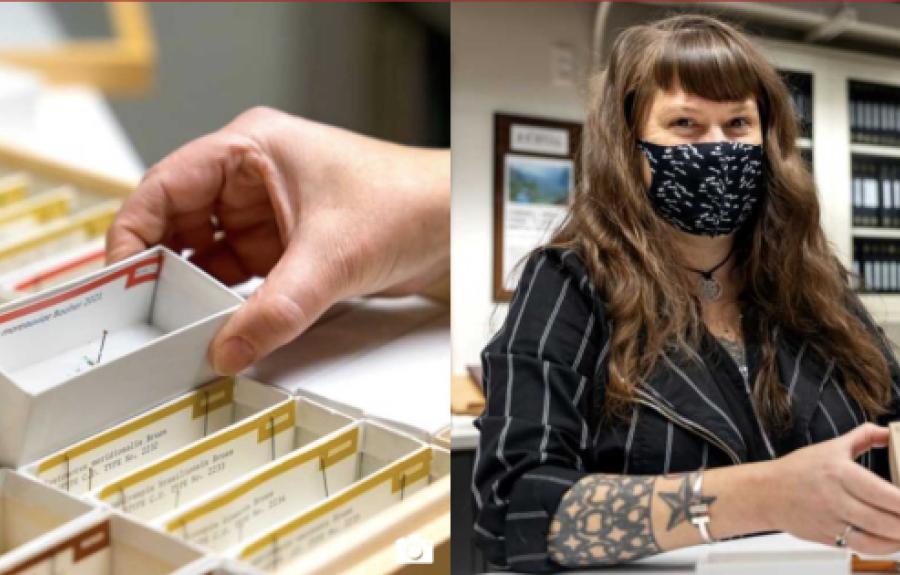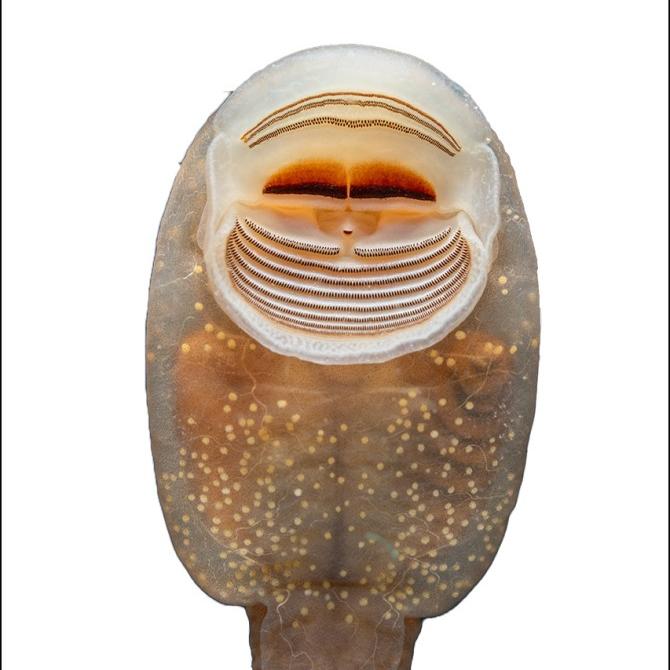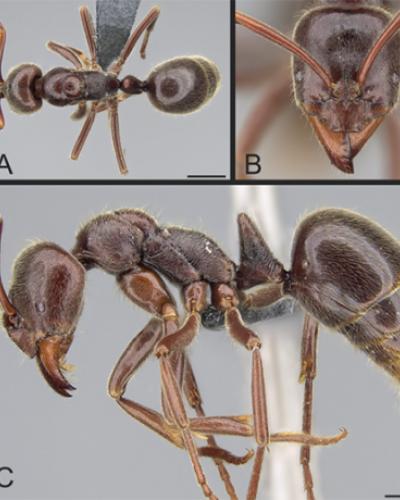A new ant species collected in New Mexico has been named Strumigenys moreauviae, after CALS faculty member Corrie Moreau, the Martha N. and John C. Moser Professor Arthropod Biosystematics and Biodiversity and director of the Cornell University Insect Collection.
The species was named after Moreau by Douglas B. Booher, postdoctoral associate in the Biodiversity and Global Change Center in the Jetz Lab at Yale University and expert on the Strumigenys ant genus, after he identified biological differences in the collected ant, resulting in a 'discovery' and the need to officially name and describe the new species.
Booher and Moreau have been friends science they first met at the California Academy of Science Ant Course in 2001. Moreau served on Booher’s dissertation committee while he pursued his Ph.D. in ecology and evolutionary biology at the University of California, Los Angeles. In 2018, Booher worked alongside Moreau at the Field Museum in Chicago while completing his National Science Foundation Biological Collections Postdoctoral Fellowship.
The Ant: Strumigenys moreauviae
Etymology“Named after distinguished scientist and myrmecologist Dr. Corrie S. Moreau for her significant contributions as an evolutionary biologist. I met Dr. Moreau as a student at the first Ant Course in 2001 and was infected, as many other myrmecologists have been, by her viral enthusiasm of the ant world and unapologetic inclusiveness. The name was created by adding the singular Latin genitive case suffix -ae to the last name of a female person, this ending preceded by the infix -vi- inserted for ease of pronunciation. The orthography of an eponym is an unchangeable genitive noun and does not depend on the generic name in which the epithet is used,” explains Booher in his article, “The Ant Genus Strumigenys Smith, 1860 (Hymenoptera: Formicidae) in Western North American North of New Mexico,” published Nov. 4 in Zootaxa.
The Strumigenys genusLittle is known about the Strumigenys moreauviae. It was discovered in 1999 but had remained an unknown species until its recent description by Booher. It is part of the extremely diverse Strumigenys ant genus found around the world with more than 850 described and existing species to date. The leaf-litter ants are typically found in moist tropical and subtropical rainforests and are absent from arctic zones. While existing in temperate zones and arid regions, they do so in low diversity. In North America specifically, the Strumigenysare common in eastern deciduous forests but less so in the west.
Moreau prepares the Strumigenys moreauviae holotype for inclusion in the Cornell University Insect Collection; photos by Noël Heaney/Cornell University
The namesake: About Corrie Moreau
Corrie Moreau has spent her career working in natural history collections – as an undergraduate and master’s student at San Francisco State University, a doctoral student at Harvard University, a postdoctoral researcher at the University of California, Berkeley, in her previous faculty position as director of the Integrative Research Center at the Field Museum of Natural History in Chicago and most recently, her position as head curator and director of the CUIC, responsible for its overall administration, development and enhancement. Her own research unites genomic DNA and microbiology to get a richer picture of how ants have been so evolutionarily and ecologically successful.
"Corrie’s lab is an extension of herself, a collection of excellent scientists with diverse personalities and many backgrounds. Her lab always felt kind and supportive, a great environment. Corrie has supported the diversity of humans in her lab and in her life, and that is something I wanted to honor when naming an ant after her. She has always come across to me as a genuine force of change for diversity inclusion; she does this elegantly and functionally, mentoring and producing excellent and prepared young scientists in her lab." - Doug Booher
“I was so attracted to studying ants because they’re social; we can actually watch how they’re interacting with one another in real time. We can make hypotheses about how broader behaviors or interactions have evolved or [ask] what is their function.”- Corrie Moreau
The orginal version of this article was published by CALS News.
A portion of this article was published in the Cornell Chronicle.







